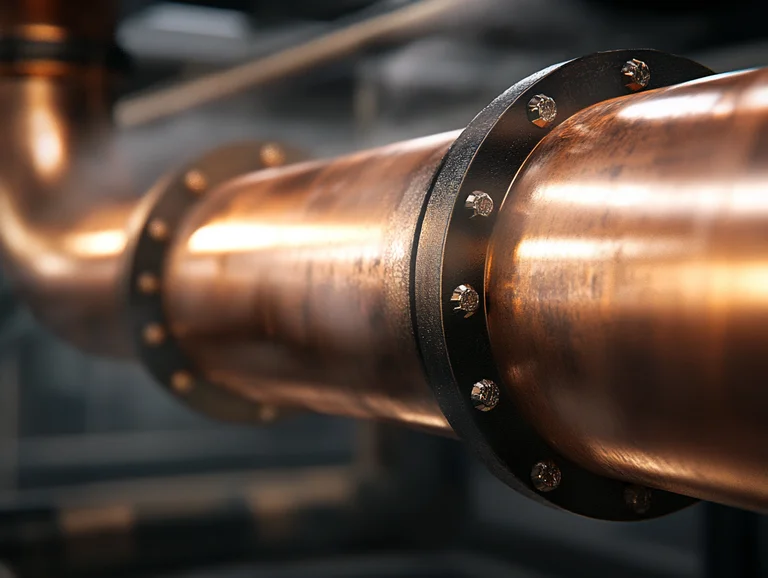- Basic Concepts
What Is Superheat?
Controlling superheat is the key to protecting the compressor—the heart of any cooling system—and ensuring it runs at peak efficiency. In this article, we break down the concept of superheat, its importance, and how to measure it accurately.
Cooling Maestro
Co-Founder

In the world of refrigeration and air conditioning, there is a term that is frequently heard but whose importance is often not fully understood: Superheat. Superheat is a critical measurement that directly impacts not only how efficiently a cooling system operates but also the lifespan of its most expensive component, the compressor. So, what exactly is superheat, and why is it so important?
What is Superheat?
In the simplest terms, superheat is the amount of heat added to a refrigerant vapor above its saturation (boiling) temperature at a given pressure.
To better understand this, think of water. At sea level, water boils and turns into steam at 100°C (212°F). If we continue to heat this steam at 100°C, its temperature will rise to 101°C, 105°C, 110°C, and so on. This temperature increase above the boiling point of the steam is called superheat. For example, steam at 110°C has a superheat of 10°C (110°C - 100°C).
The logic is the same in refrigeration systems. As the refrigerant passes through the evaporator, it absorbs heat from the surrounding space, boils, and vaporizes. The goal is for the refrigerant to be entirely in a vapor state by the time it leaves the evaporator, and even for its temperature to have risen slightly above its boiling point. This temperature difference constitutes the system’s superheat value..
Why is Superheat So Vital?
Superheat has two fundamental and vital functions:
1-Compressor Protection
This is the most critical role of superheat. Compressors are designed to compress vapor only, not liquids. If the refrigerant leaving the evaporator is not heated enough (meaning the superheat value is too low or zero), liquid refrigerant can travel down the suction line to the compressor. This condition is called liquid slugging. Since liquids are incompressible, any liquid entering the compressor can cause immediate and catastrophic damage to pistons, valve plates, and other mechanical components.
A correctly adjusted superheat is the guarantee that the refrigerant is 100% vapor before it reaches the compressor.
2-System Efficiency and Capacity
Superheat directly affects the efficiency of the system.
-
Low Superheat: Besides posing a risk to the compressor, it means that the heat transfer surface of the evaporator is not being fully utilized. This reduces the system’s overall cooling capacity.
-
High Superheat: In this case, the evaporator is being “starved.” This means there is no liquid left to vaporize in the final sections of the evaporator, and the vapor is being heated excessively. This leads to inefficient use of the evaporator, a drop in suction pressure, and increased energy consumption as the compressor works harder. It can also cause the compressor to overheat, shortening its lifespan.
An optimal superheat value both keeps the compressor safe and ensures that the entire surface of the evaporator is used to its maximum efficiency.
How to Measure Superheat?
Measuring superheat is a simple subtraction, but it requires the right tools and steps:
-
Measure Suction Line Pressure: Using your gauge manifold set, read the pressure from the compressor’s suction (service) valve or at a point closest to the evaporator outlet.
-
Convert Pressure to Saturation Temperature: Use a Pressure-Temperature (P-T) chart for the specific refrigerant in the system to convert the pressure reading to its corresponding saturation (boiling) temperature. Digital manifolds perform this conversion automatically.
-
Measure Suction Line Temperature: As close as possible to where you measured the pressure, use a quality pipe clamp thermometer to measure the actual surface temperature of the suction line.
Calculate:
Superheat = Actual Line Temperature (Step 3) - Saturation Temperature (Step 2)
Example:
- The system uses R-410A refrigerant.
- Suction line pressure: 118 psi.
- The corresponding saturation temperature for R-410A at 118 psi on a P-T chart is 41°F (or 5°C).
- The actual line temperature measured with your thermometer is 53°F (or 12°C).
Superheat = 53°F - 41°F = 12°F (or 12°C - 5°C = 7°C)
What is the Ideal Superheat Value?
The ideal superheat value varies depending on the system’s design, operating conditions, and the type of expansion device used. However, as a general rule of thumb, a superheat value between 8°F and 15°F (or 5°C to 8°C) is targeted for most air conditioning and medium-temperature refrigeration systems. For precise values, always consult the manufacturer’s technical data.
Conclusion
Superheat is one of a refrigeration technician’s most powerful diagnostic tools. It represents much more than just a number; it’s an indicator of the health of the system’s circulation. A correct superheat setting is the cornerstone of a long-lasting, safe, and efficient system. Therefore, checking superheat during every maintenance and repair job is not a luxury, but a necessity.
Let's Design the Perfect Solution for Your Project Together
Let us analyze your needs to design and implement a custom, energy-efficient, and durable refrigeration system for you. Contact us to meet our expert team and get a personalized quote for your project.
Customer Satisfaction
For us, success is more than just a delivered project; it's a long-term, trust-based partnership fortified by our after-sales support.
Field Experience
With over 15 years of industry experience, we craft the most precise and efficient solutions for every detail of your project.
Sustainability
Boost your business's profitability and competitive edge through our focus on Eco-Friendly and Energy-Efficient manufacturing.